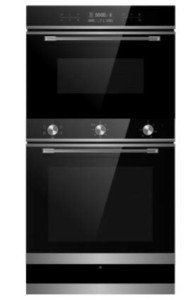What NOT To Do In The Integrated Ovens And Hobs Industry

The Future of Culinary Convenience: Integrated Ovens and Hobs
In the ever-evolving world of kitchen style, integrated ovens and hobs are at the leading edge of modern-day culinary innovation. These appliances not just assure aesthetic appeal but likewise enhance performance and efficiency, changing how we prepare our meals. As house owners progressively look for to produce smooth, trendy, and easy to use cooking areas, the combination of ovens and hobs uses an ideal solution. This post explores what integrated ovens and hobs are, their benefits, and crucial considerations for those wanting to update their kitchen area.
What Are Integrated Ovens and Hobs?
Integrated ovens and hobs are cooking area home appliances flawlessly built into the kitchen cabinetry or counters, rather than standing out as separate entities. Integrated ovens are created to mix into kitchen units, using a flush surface with surrounding cabinetry. Likewise, integrated hobs are installed directly into the countertop, producing a streamlined appearance. This minimalist style approach not just raises the aesthetic appeal of the kitchen area but likewise takes full advantage of readily available area.
Kinds Of Integrated Ovens
Single Ovens: These standalone units are created for simpleness and ease of usage, including a single cooking chamber and multiple cooking modes such as baking, grilling, and roasting.

Double Ovens: Ideal for larger families or avid cooks, double ovens provide 2 independent cooking compartments, permitting several dishes to be ready concurrently at various temperatures.
Mix Ovens: Blending traditional baking and steam cooking, mix ovens provide adaptability for different cooking needs, retaining wetness while guaranteeing perfectly prepared meals.
Types of Integrated Hobs
Gas Hobs: These hobs enable accurate temperature level control and instantaneous heat, making them a preferred among professional chefs and cooking lovers.
Induction Hobs: Known for their efficiency and safety, induction hobs utilize electromagnetic energy to heat pots and pans straight. They are quick to heat and cool off quickly, decreasing the danger of burns.
Electric Hobs: Featuring smooth ceramic or glass surfaces, electric hobs are simple to clean and offer an even heat circulation for a range of cooking designs.
Benefits of Integrated Ovens and Hobs
1. bulit-in ovens
With the pattern of smaller sized home and open-concept homes, integrated home appliances help optimize kitchen area space. By fitting perfectly into cabinetry, cooking areas can appear bigger and more open, minimizing mess and enhancing visual appeal.
2. Visual Appeal
Integrated ovens and hobs provide a sleek, modern-day appearance that fits well within different style styles. The capability to personalize cabinets guarantees that homeowners can achieve a cohesive appearance that matches their design, whether modern, conventional, or something in between.
3. Improved Functionality
Integrated devices typically come with sophisticated functions such as wise technology, self-cleaning choices, and different cooking modes. These improvements not only improve the cooking process but likewise improve usability, making cooking a pleasurable experience.
4. Security Features
Integrated hobs, especially induction models, are thought about more secure than conventional cooking surface areas. They cool off quickly, decreasing the danger of burns, and often consist of features like kid locks and automatic shut-off for extra security.
Key Considerations When Choosing Integrated Ovens and Hobs
1. Area and Layout
Before purchasing integrated home appliances, think about the area readily available in your kitchen. Step the cabinets and counter tops thoroughly to make sure an ideal fit, permitting sufficient ventilation and installation space.
2. Cooking Needs
Examine your cooking practices and preferences. If you often entertain or cook big meals, a double oven may be the finest option. Alternatively, if you're an occasional chef, a single oven might be enough. Similarly, picking between gas, electric, or induction hobs will depend on your cooking design and convenience level.
3. Energy Efficiency
With increasing energy costs and growing environmental issues, going with energy-efficient home appliances can save money in the long run. Search for items with high energy rankings and features like programmable timers and eco-modes.
4. Quality and Brand
Buying high-quality devices from respectable brands makes sure sturdiness and performance. Reading client reviews and seeking recommendations can help limit the best alternatives customized to your requirements.
Conclusion
Integrated ovens and hobs are more than just kitchen devices; they represent a shift towards a more practical, trendy, and effective technique to cooking. As property owners prioritize seamless style, convenience, and advanced functions, these integrated options will certainly shape the kitchens of tomorrow. Whether renovating a cooking area or designing a new one from scratch, integrating ovens and hobs is an investment that promises to enhance both cooking experiences and the general visual of the home.
